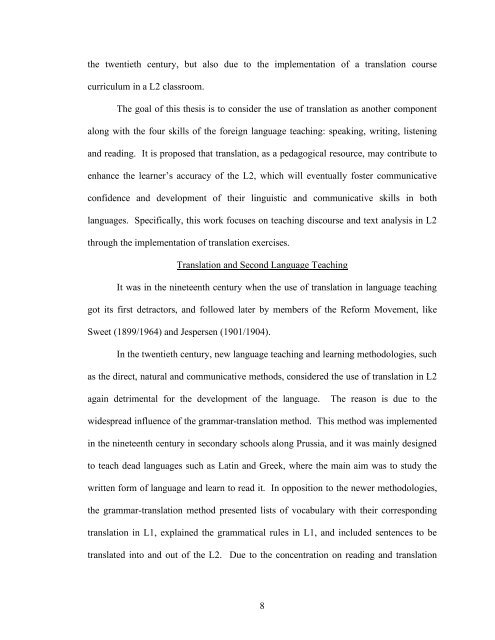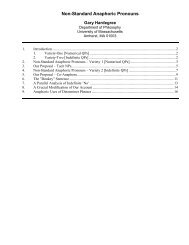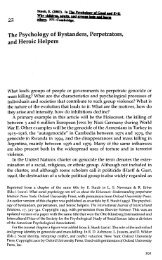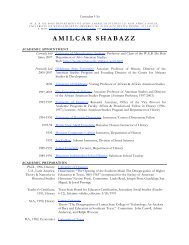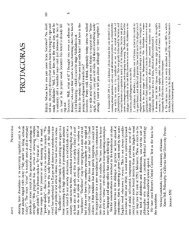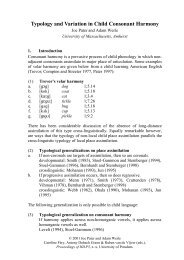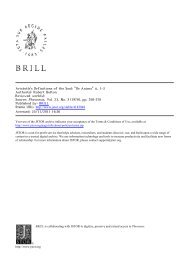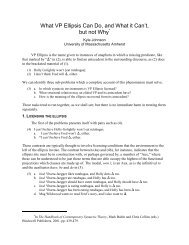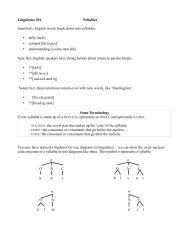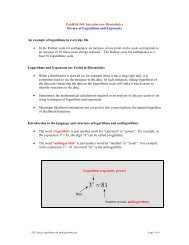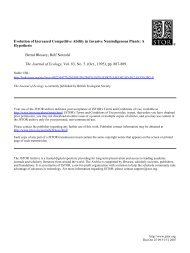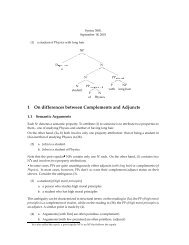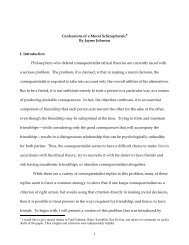rethinking translation in the second language classroom
rethinking translation in the second language classroom
rethinking translation in the second language classroom
Create successful ePaper yourself
Turn your PDF publications into a flip-book with our unique Google optimized e-Paper software.
<strong>the</strong> twentieth century, but also due to <strong>the</strong> implementation of a <strong>translation</strong> course<br />
curriculum <strong>in</strong> a L2 <strong>classroom</strong>.<br />
The goal of this <strong>the</strong>sis is to consider <strong>the</strong> use of <strong>translation</strong> as ano<strong>the</strong>r component<br />
along with <strong>the</strong> four skills of <strong>the</strong> foreign <strong>language</strong> teach<strong>in</strong>g: speak<strong>in</strong>g, writ<strong>in</strong>g, listen<strong>in</strong>g<br />
and read<strong>in</strong>g. It is proposed that <strong>translation</strong>, as a pedagogical resource, may contribute to<br />
enhance <strong>the</strong> learner’s accuracy of <strong>the</strong> L2, which will eventually foster communicative<br />
confidence and development of <strong>the</strong>ir l<strong>in</strong>guistic and communicative skills <strong>in</strong> both<br />
<strong>language</strong>s. Specifically, this work focuses on teach<strong>in</strong>g discourse and text analysis <strong>in</strong> L2<br />
through <strong>the</strong> implementation of <strong>translation</strong> exercises.<br />
Translation and Second Language Teach<strong>in</strong>g<br />
It was <strong>in</strong> <strong>the</strong> n<strong>in</strong>eteenth century when <strong>the</strong> use of <strong>translation</strong> <strong>in</strong> <strong>language</strong> teach<strong>in</strong>g<br />
got its first detractors, and followed later by members of <strong>the</strong> Reform Movement, like<br />
Sweet (1899/1964) and Jespersen (1901/1904).<br />
In <strong>the</strong> twentieth century, new <strong>language</strong> teach<strong>in</strong>g and learn<strong>in</strong>g methodologies, such<br />
as <strong>the</strong> direct, natural and communicative methods, considered <strong>the</strong> use of <strong>translation</strong> <strong>in</strong> L2<br />
aga<strong>in</strong> detrimental for <strong>the</strong> development of <strong>the</strong> <strong>language</strong>. The reason is due to <strong>the</strong><br />
widespread <strong>in</strong>fluence of <strong>the</strong> grammar-<strong>translation</strong> method. This method was implemented<br />
<strong>in</strong> <strong>the</strong> n<strong>in</strong>eteenth century <strong>in</strong> <strong>second</strong>ary schools along Prussia, and it was ma<strong>in</strong>ly designed<br />
to teach dead <strong>language</strong>s such as Lat<strong>in</strong> and Greek, where <strong>the</strong> ma<strong>in</strong> aim was to study <strong>the</strong><br />
written form of <strong>language</strong> and learn to read it. In opposition to <strong>the</strong> newer methodologies,<br />
<strong>the</strong> grammar-<strong>translation</strong> method presented lists of vocabulary with <strong>the</strong>ir correspond<strong>in</strong>g<br />
<strong>translation</strong> <strong>in</strong> L1, expla<strong>in</strong>ed <strong>the</strong> grammatical rules <strong>in</strong> L1, and <strong>in</strong>cluded sentences to be<br />
translated <strong>in</strong>to and out of <strong>the</strong> L2. Due to <strong>the</strong> concentration on read<strong>in</strong>g and <strong>translation</strong><br />
8


